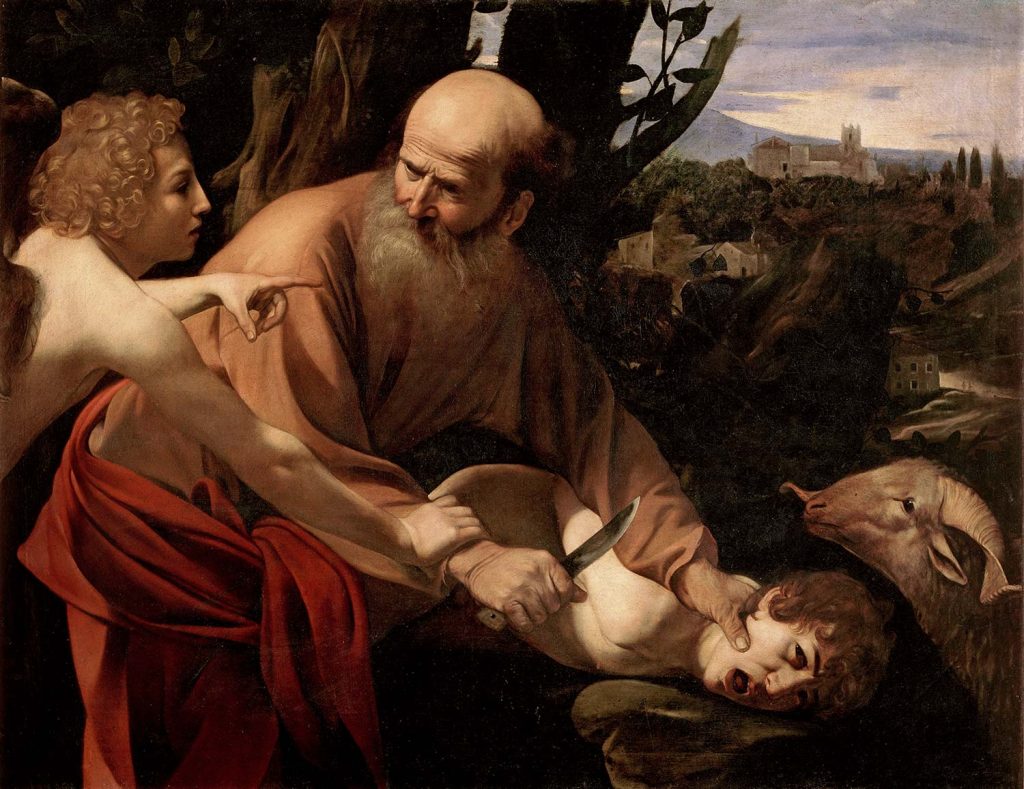
Sacrifice of Isaac by Caravaggio was created in 1603. The painting is in Galleria degli Uffizi, Florence. The size of the work is 104 x 135 cm and is made as an oil on canvas.
The painting illustrates the Old Testament passage in which God subjected Abraham to an extraordinary test of obedience by ordering him to sacrifice his only son Isaac. Caravaggio faithfully depicts the crucial moment of this dramatic story, when the old Abraham, at the very moment he is about to immolate Isaac, is blocked by an angel sent by the Lord. “Do not lay your hand on the boy or do anything to him! For now I know that you fear God, seeing you have not withheld your son, your only son, from me”, says the God’s messenger to Abraham (Genesis XXII, v. 12) while pointing with his left hand at a ram to be sacrificed in place of his son. Caravaggio chooses to humanise the figure of the angel by placing it alongside Abraham: a solid presence that grasps the old man’s wrist with a strong, tight grip. In the background unfolds a wide, Mediterranean hilly landscape, animated by cottages and a village. (Read more in Galleria degli Uffizi)
About the Artist: Italian painter Michelangelo Merisi da Caravaggio was born in Milan. During the final four years of his life he moved between Naples, Malta, and Sicily until his death. His paintings have been characterized by art critics as combining a realistic observation of the human state, both physical and emotional, with a dramatic use of lighting, which had a formative influence on Baroque painting. Caravaggio employed close physical observation with a dramatic use of chiaroscuro that came to be known as tenebrism… Read more

